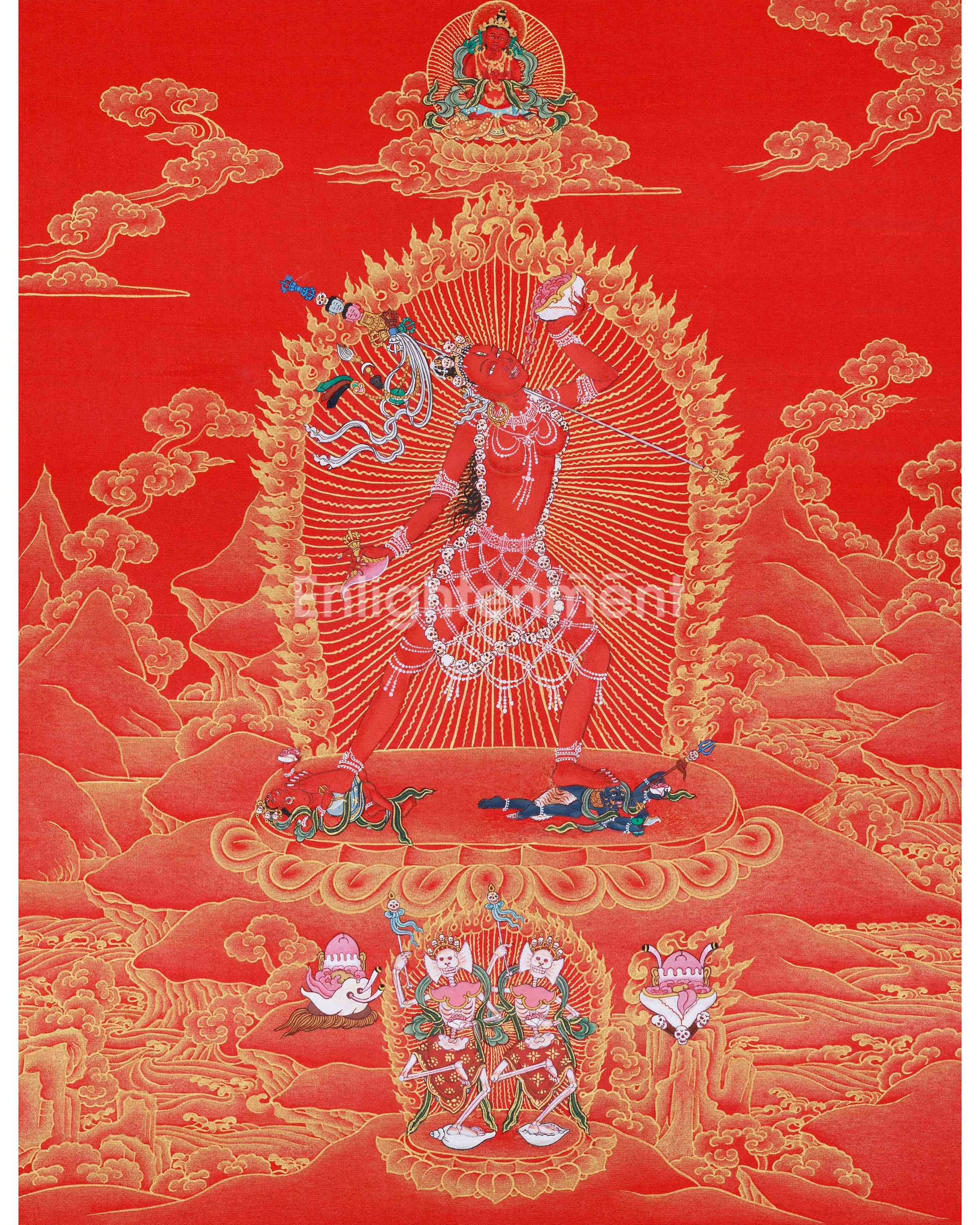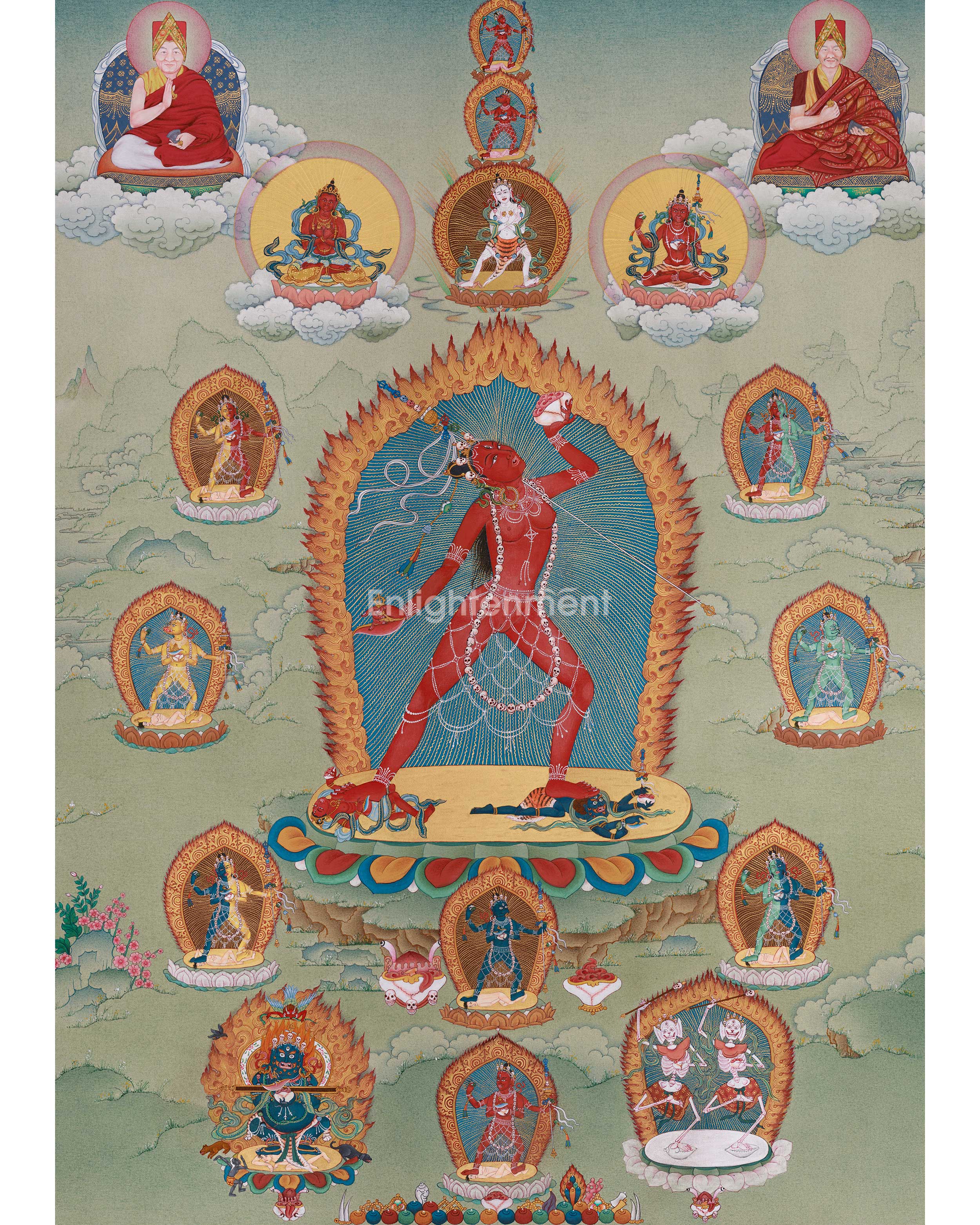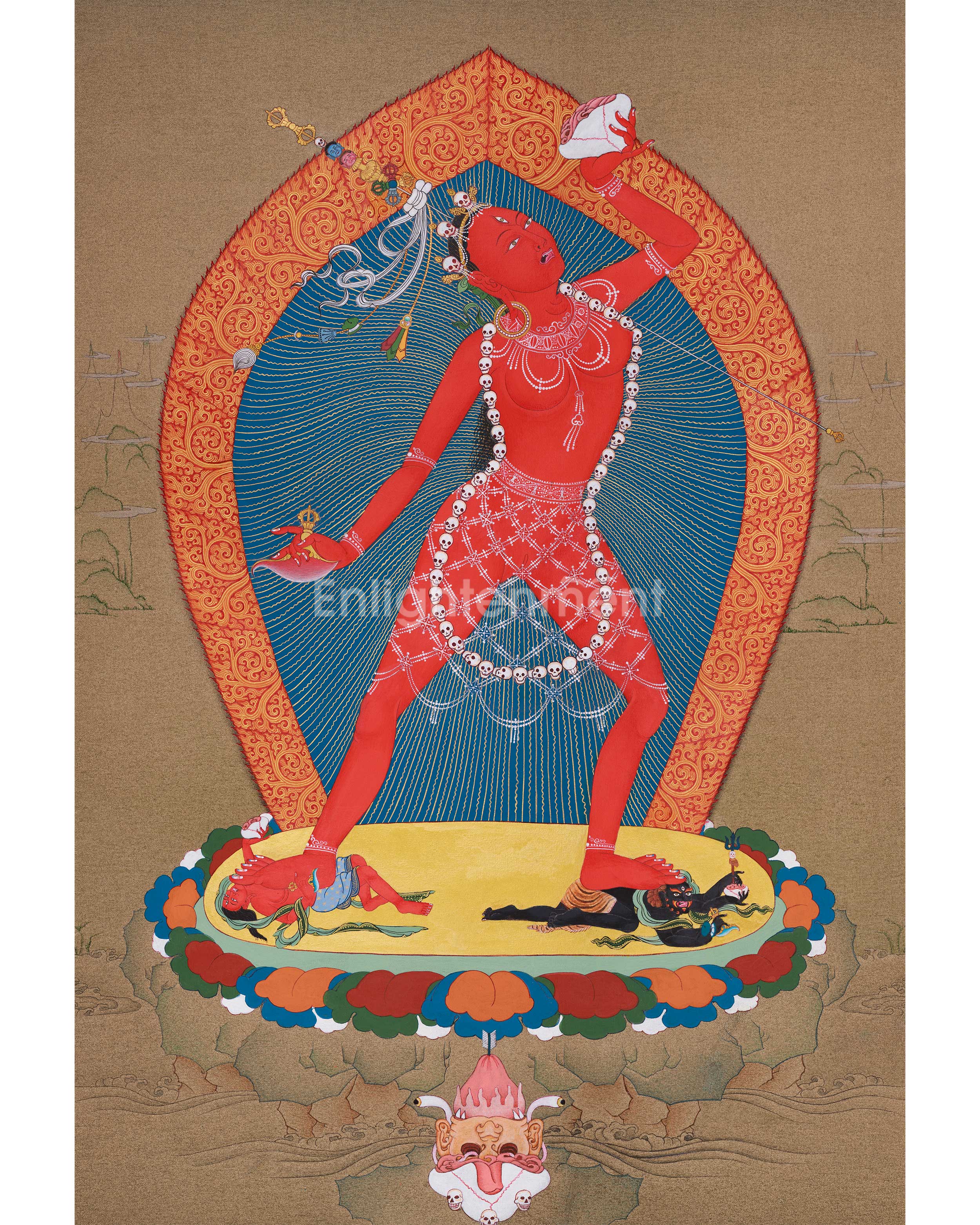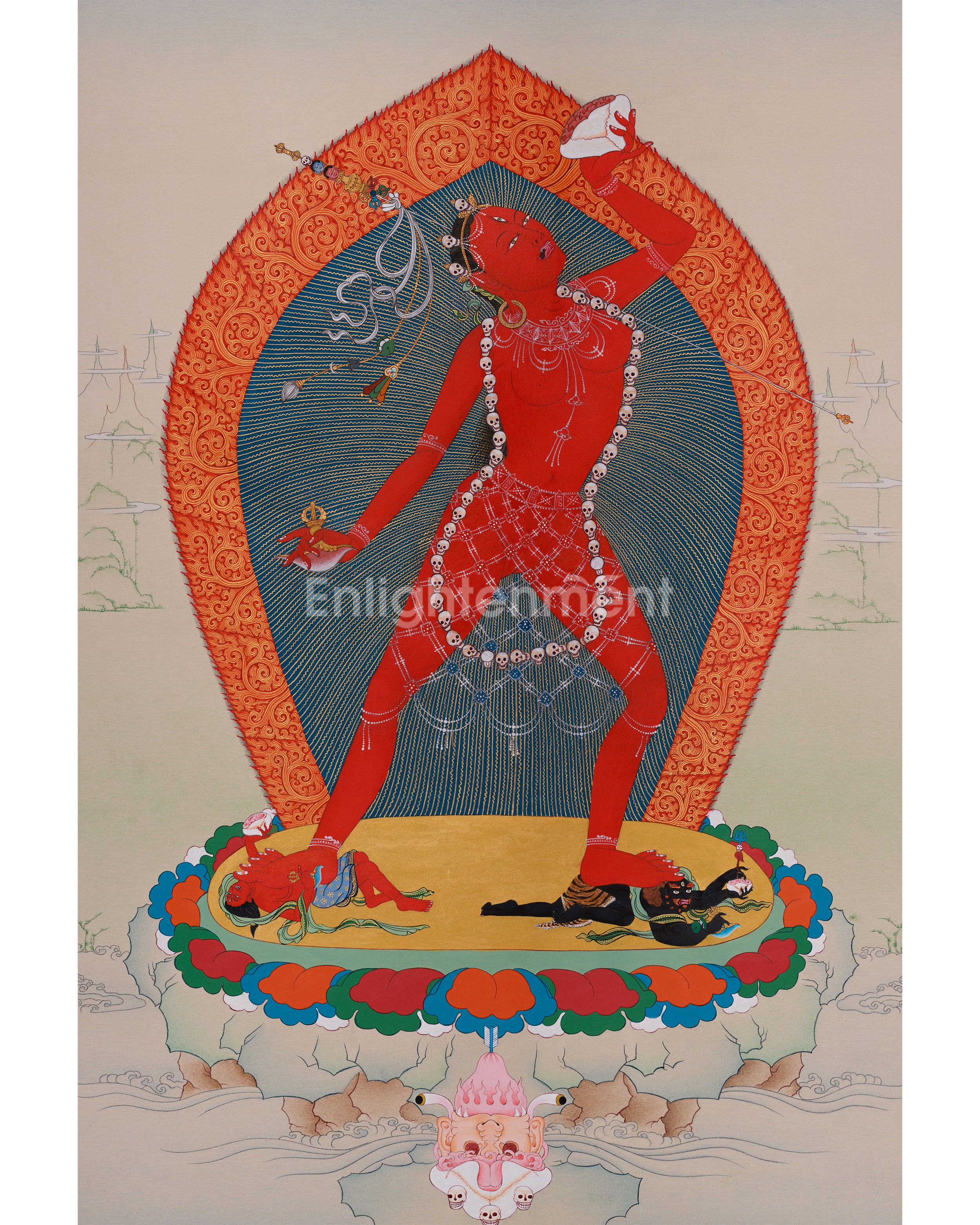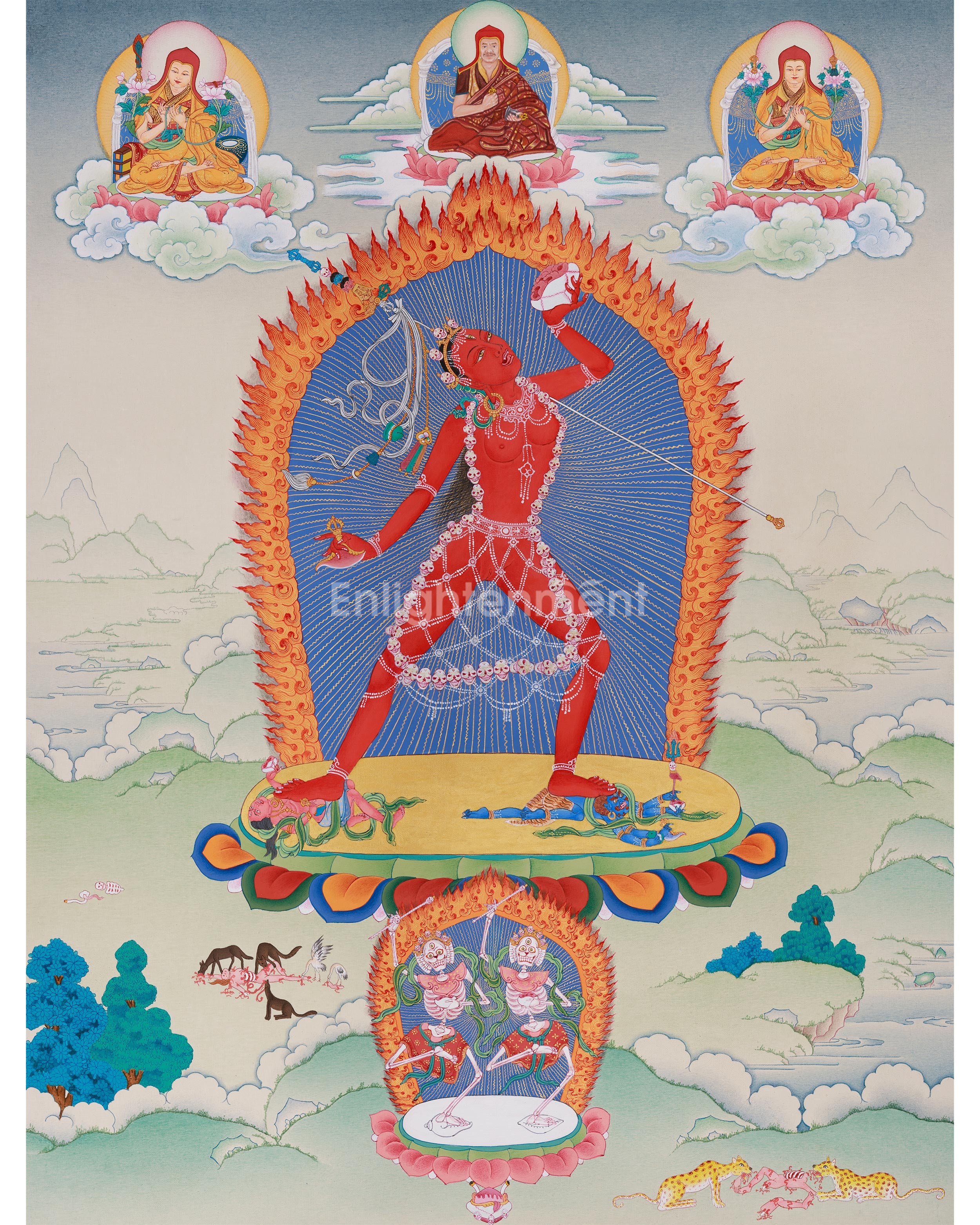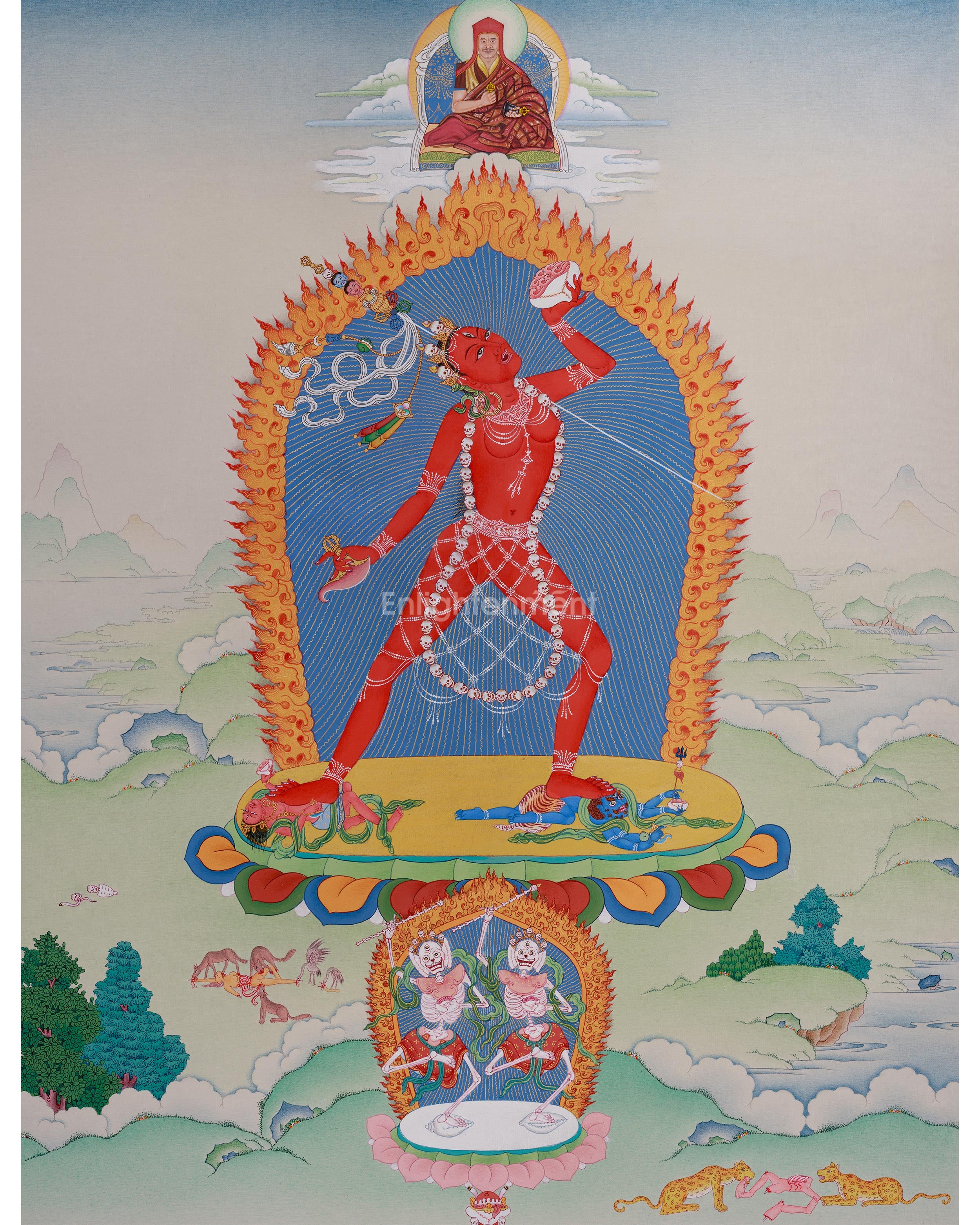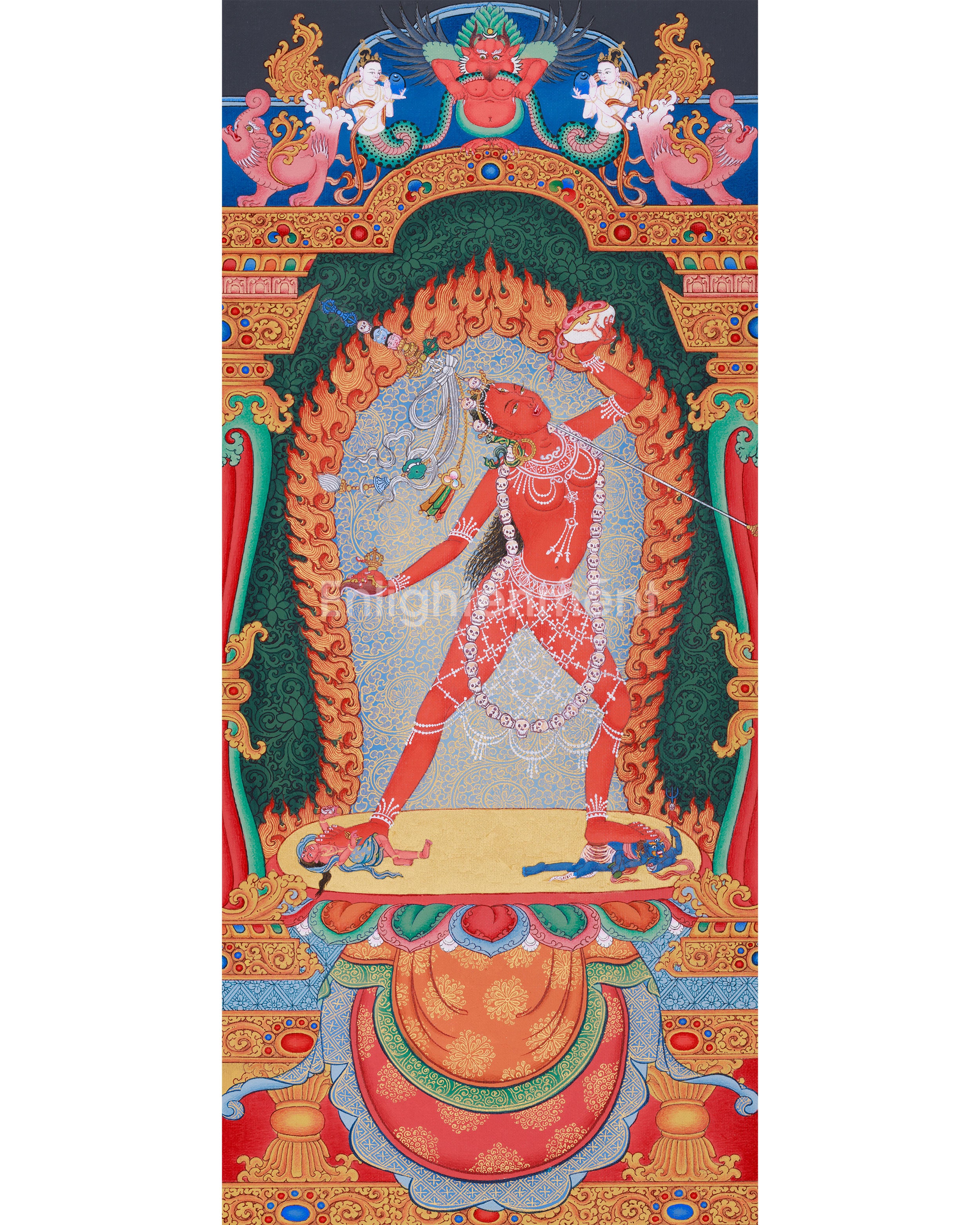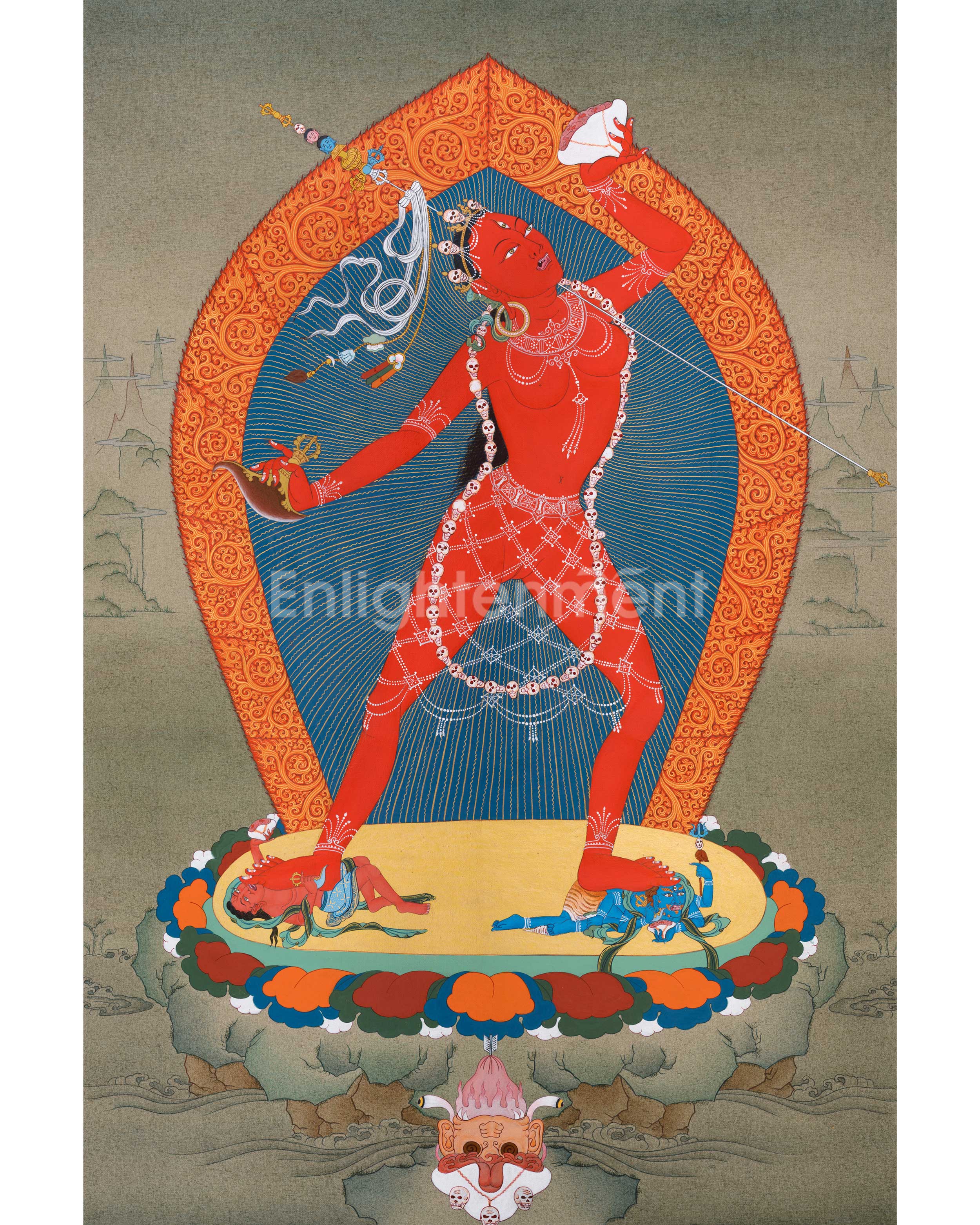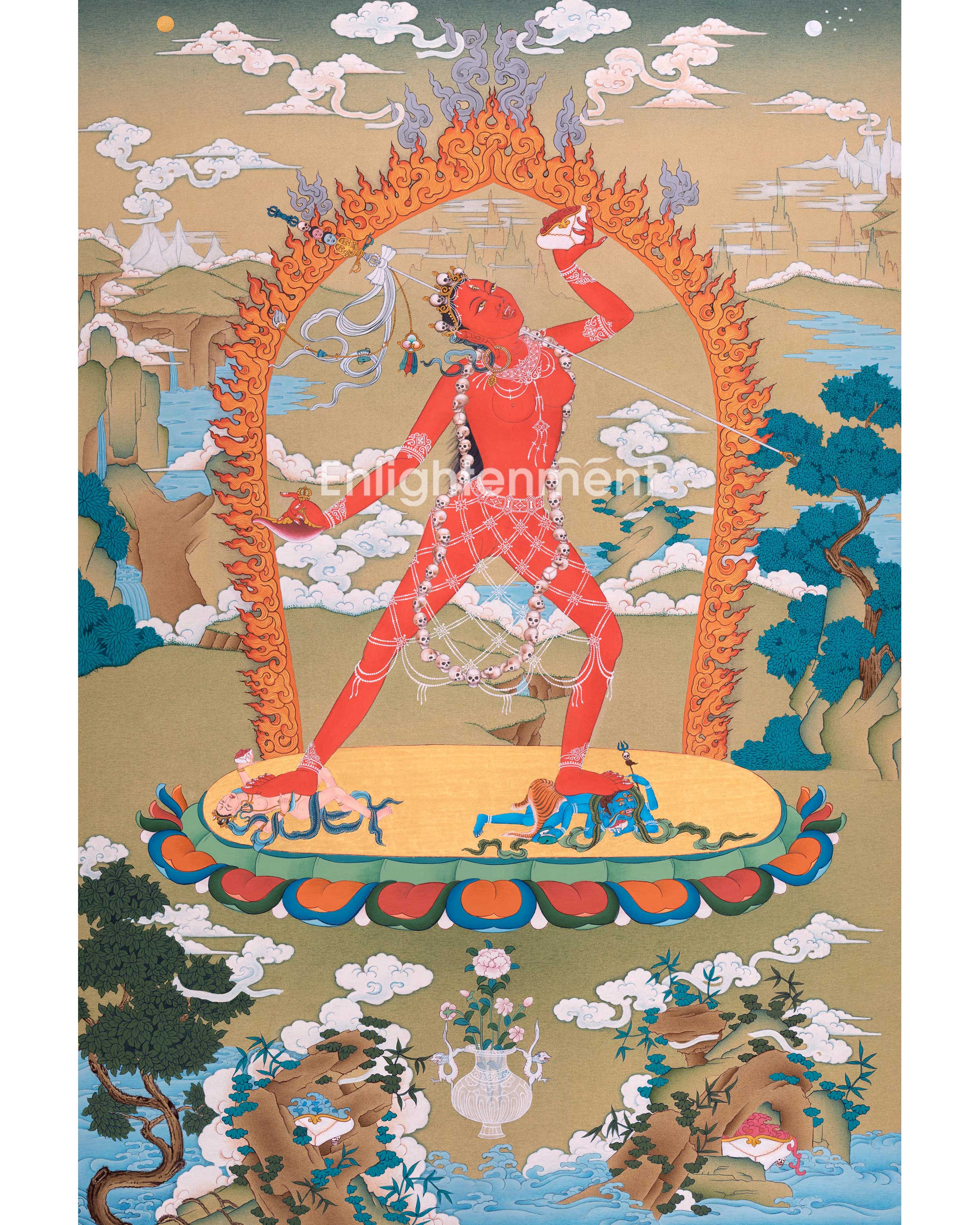Dakini
9 products
Showing 1 - 9 of 9 products
The Dakini thangkas are by far some of the most popular and sought-after paintings, followed closely by the Wrathful deity thangkas.
Dakini Thangka: The Embodiment of Enlightened Energy in Buddhism
The word "Dakini" means "sky-goer" or "sky-dancer" and is derived from the Sanskrit word "dāk," which means "sky" or "space." A Dakini Thangka is a sacred Buddhist painting that portrays enlightened female wisdom beings such as Vajrayogini, Kurukulla, Simhamukha, Palden Lhamo, and other tantric Dakinis. These thangkas are powerful visual supports for meditation, Vajrayana rituals, and daily spiritual practice. For Buddhist practitioners and collectors alike, a Dakini Thangka holds deep symbolic meaning and is often regarded as an empowering piece for transformation and realization.
What types of Dakini Thangkas are available in this collection?
Our Dakini Thangka Collection features a wide range of authentic hand-painted thangkas, including:
- Vajrayogini in flames of wisdom
- fierce Palden Lhamo riding her mule,
- Kurukulla in passionate red
- Simhamukha with a lion’s face
- Yeshe Tsogyal in peaceful repose
- Mandarva, the Indian Princess
- Sarasawati, the Wisdom Dakini
Each thangka is painted by our master artists using natural stone pigments on handmade traditional Cotton Canvas.
Why choose Enlightenment Thangka for buying Dakini Thangka paintings online?
We offer premium-quality, original Dakini thangkas that are ethically sourced and made with devotion. Every piece is a museum-grade, collector’s item, making it perfect for personal shrine setup, temple offering, Dharma center display, or as a spiritual gift. With free international shipping and guaranteed authenticity, Our Dakini Thangka artworks are ideal for both serious practitioners and collectors.
Are the Dakini Thangkas suitable for gifting or sacred offering?
Absolutely. Many of our clients purchase these thangkas as gifts for their teacher, spiritual friends, or for offering at a temple or monastery. Each thangka comes with detailed iconography and can be used for empowerment ceremonies, deity visualization, or personal devotion.
Do you offer custom Dakini Thangkas or larger commissions?
Yes. If you are looking for a specific form of Dakini or a large-size custom commission (for temples, retreat centers, or lineage-based requests), we accept orders for made-to-order thangkas with your preferred size, iconography, and deity configuration.
